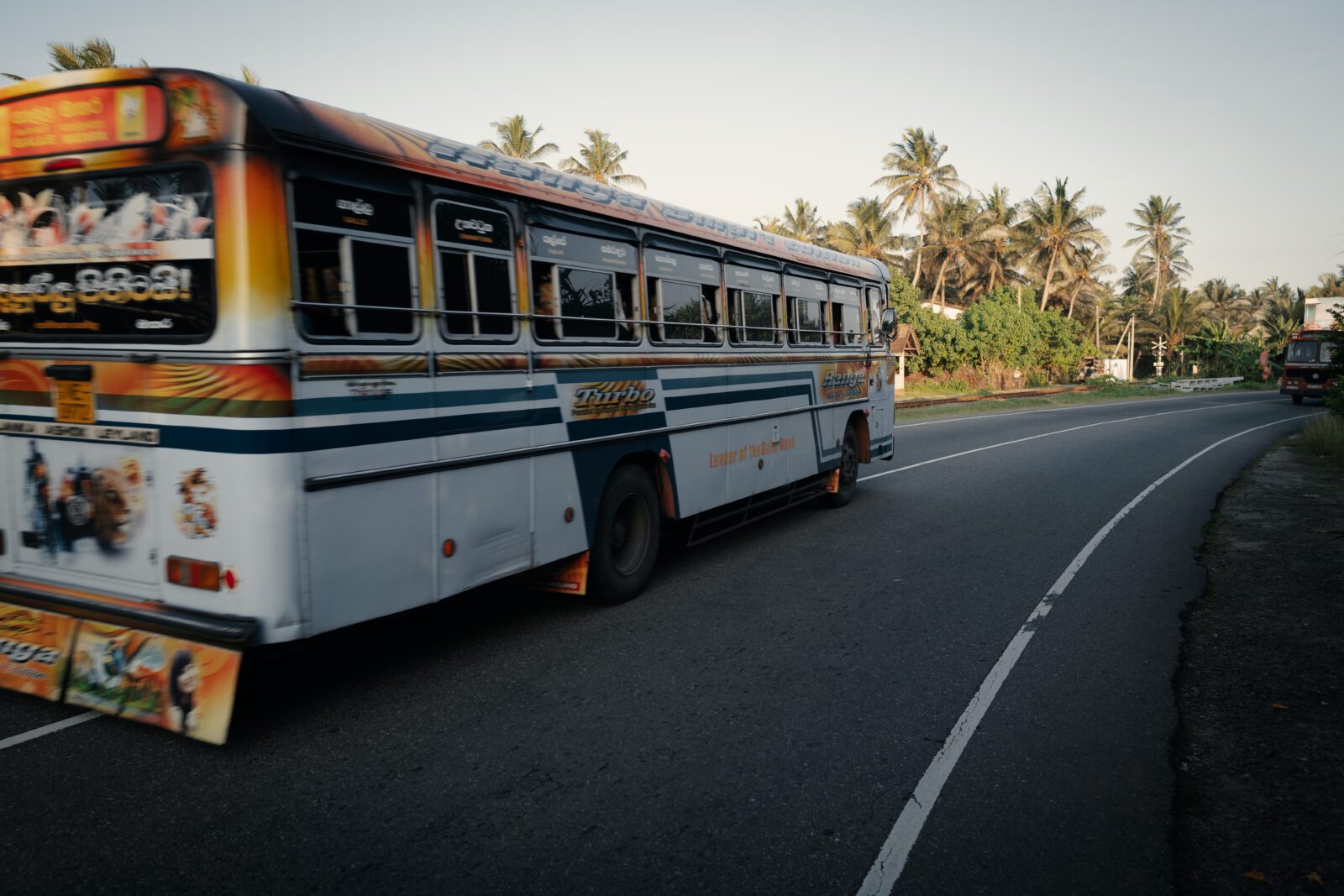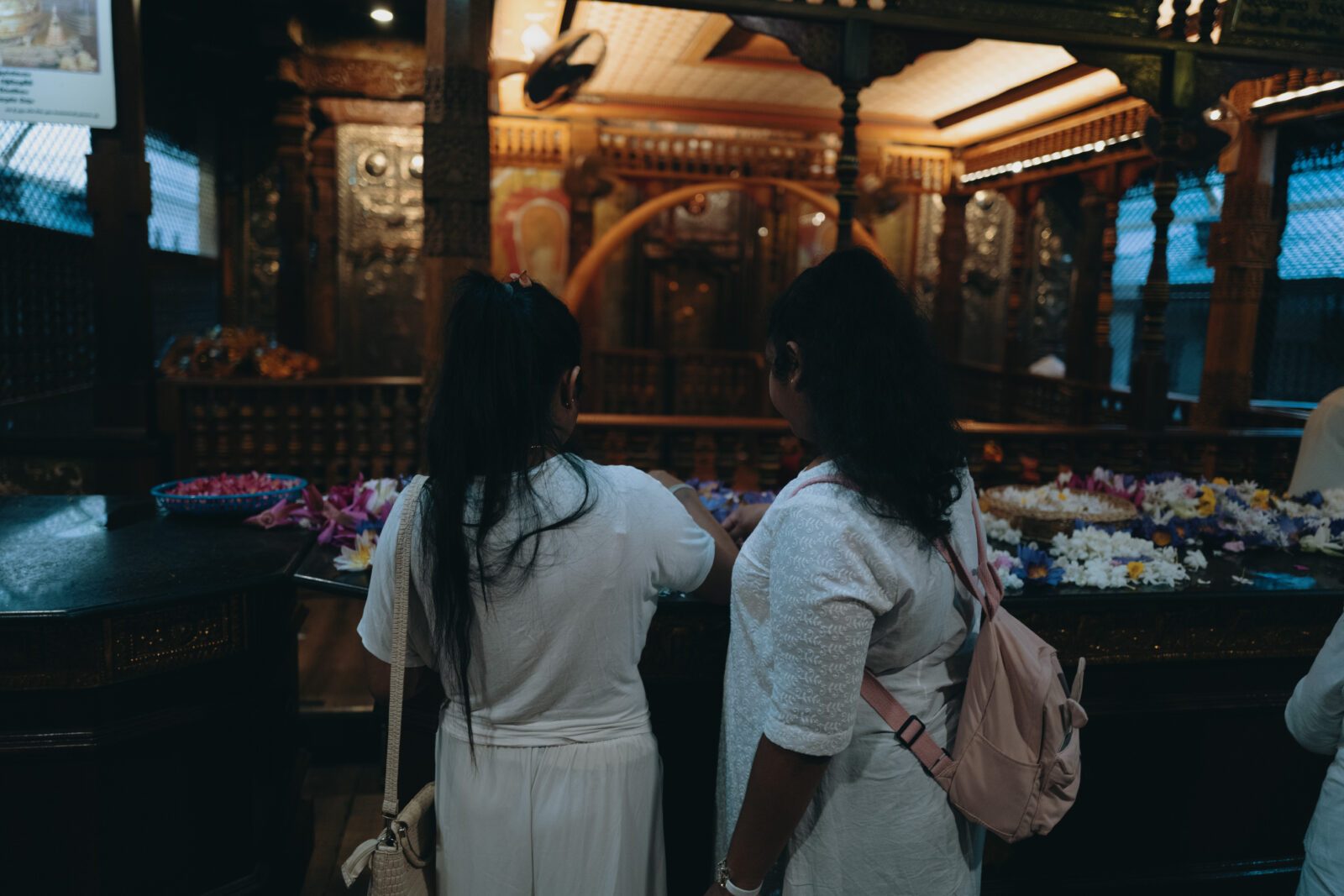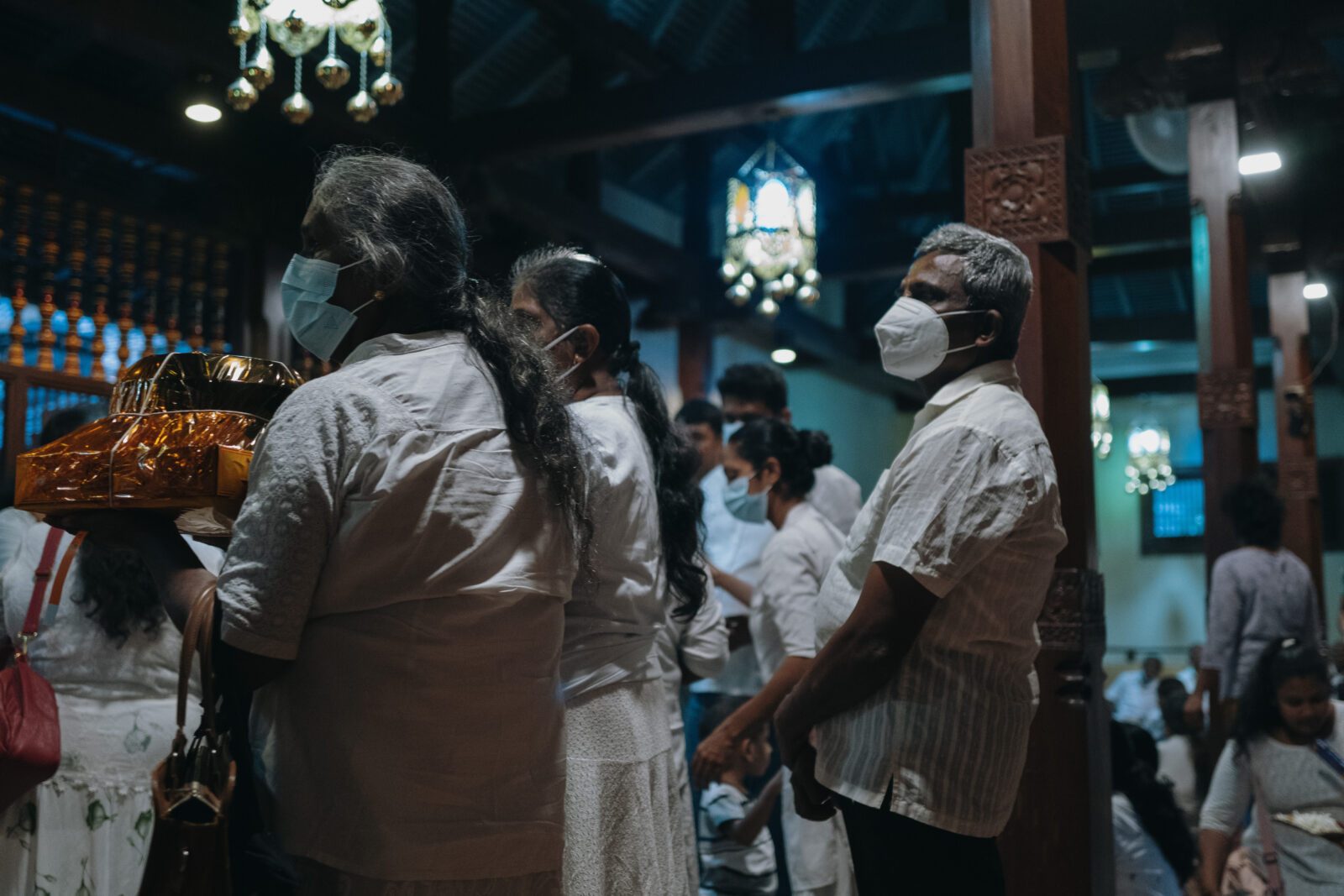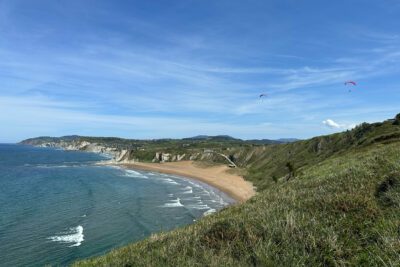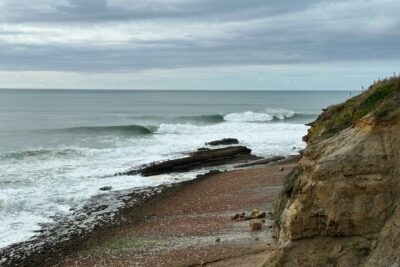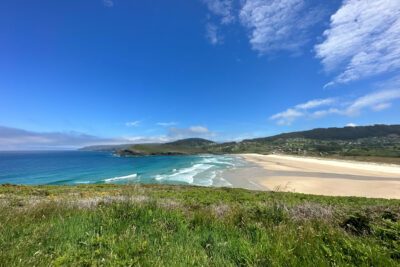Ahangama
The town of Ahangama is arguably the best and most up-and-coming region for surfing in South-West Sri Lanka. The waves are suitable for intermediate and advanced surfers, with some breaks offering long and fast rides. There are several surf schools and rental shops in the area as well. Spots considered beginner friendly are Kabalana Beach and Marshmallow. All other spots are rather suitable for more experienced surfers. The most challenging and competitive surf spot is Kabalana The Rock. A very consistent wave that can get quite big with swell sizes above 4ft and swell periods above 14 seconds. Also, the lineup can be quite intimidating due to the localism of ex-pat crowds. If you are not at least an advanced intermediate surfer, don’t go there and rather pick one of the many spots nearby to avoid bad vibes.
Midigama
From Ahangama it is just a short drive to Midiga, where you will find several more surf spots. Starting with Midigama Right / Lazy Right, which is a beginner-friendly surf spot and also works decently for more experienced surfers during bigger swells. Another spot close by is Midigama Left / Lazy Left, a left-hander point break wave suitable for intermediate surfers. Lazy Left is followed by the surf spot Rams – a challenging break with a fast and hollow take-off over a shallow reef, recommended for advanced surfers unless you are keen to hurt yourself or damage your board. A bit further down the coast, there is the surf spot Plantation, suitable for intermediate surfers.
Weligama
Weligama is a great place for beginners to learn to surf. The waves on the large sheltered bay are gentle and the water is shallow. There are many surf schools in the area that offer lessons and board rentals. As the bay is quite big, for intermediate surfers there are various peaks to catch waves every now and then.
Mirissa
Mirissa is just a short drive away from Weligama offering one main surf spot suitable for intermediate surfers in a gorgeous and probably the most picturesque setting on the island: At the most western point of the bay, between a big sea boulder and the headland, this mellow wave breaks quite shallow over a reef full of sea urchins (beware!), providing short and crumbly rides.
Matara
About a 20-minute drive further down the coast direction east from Mirissa, you will reach the town of Matara. This is not the area with the most surf spot, but a little bit west of the town, you will find the main Spot “Matara”, as well as the very beautiful spots Madiha and Turtle eco beach.
About a 10 minutes drive from Matara town further direction east on the coastline, you will find the surf spot SK Town aka Lakshawaththa Beach, a strong a-frame beach break wave, growing in popularity. This spot basically only works without wind, so best to go for a session in the morning and/or evening.
Hiriketiya
The horseshoe bay of Hiriketiya offers two breaks: a mellow beach break on the west side of the bay, suitable for beginners, and a reef break on the east side for intermediate surfers. From December to February, the swell is smaller here, making it a great surf spot for beginners. Better swells arrive from August until December making the left-hand reef break wave a good option, while beginners can still surf the beach break.
Arugam Bay, South-East Sri Lanka
Arugam Bay offers mellow point breaks and reef breaks, during the time of the year when the southwest is getting hit by the monsoon making the surfing season over there come to an end.
Arugam Bay Main Point can be considered the central point in southeast Sri Lanka and offers fast and slow sections that can occasionally turn into nice and hollow rides, right in front of the town. Direction north, the beginner-friendly Whiskey Point awaits. Direction south, you’ll find the raw and rugged and less crowded point breaks of Okanda.
3. Surf season in Sri Lanka – The best time to surf in Sri Lanka
The best time to surf in Sri Lanka is during the dry season. In South-West Sri Lanka, the time is right from November until April. After April (May to September), the rainy season starts and if you want to continue surfing in Sri Lanka, you must follow the dry season and head to the surf region south-east Sri Lanka also known as Arugam Bay.
Another option is to head to the Maldives in March/April where the most consistent swell usually kicks in until October.
4. How to get to the surf spots in Sri Lanka?
There are two ways that are most common to get around in Sri Lanka and to the breaks: taking a Tuk Tuk or renting a scooter. Tuk Tuks tie the surfboards to the top of the roof while you can sit back and relax. The problem with renting a scooter is, that in Sri Lanka, surfboard racks are illegal. This means that many scooter rentals don’t offer scooters with a surf rack and if you get one anyways, the police might stop you and you have to pay a fee. The good news is, in 2022 we did not see or hear of a single case that the Police did stop foreigners because of surf rags mounted to their scooters. There are no guarantees, but next time, we will certainly go for a scooter with a surf rag, willing to take the risk.
The alternative options to carry your surfboard on a scooter in Sri Lanka are:
- Put it onto your scooter seat and sit on it – feels weird as you sit much higher and it will overlap in the back, keep that in mind when maneuvering your scooter, especially backward
- Use a slim board bag (non-travel bag) with a shoulder strap – beware of wind / try to tighten to the handlebar so the air stream can not push it too much sideways
- Get straps from the hardware store in order to mount your board to your scooter (on the other side than the one with the exhaust pipe)
We went for solution #3. Nevertheless, when going over potholes or when the wind picks up, you might need to secure the board in addition with your left hand to make sure it does not shift and you run the risk of it falling off.
In addition, beware of the buses in Sri Lanka. They are also known as the kings of the road and are always in a rush, hence stay out of their way! They go fast and overhaul at any chance, which makes them the biggest hazard in Sri Lanka’s traffic.
5. South-West Sri Lanka Surf Map
6. Surf Board Repair Sri Lanka
In case your surfboard needs repair, we highly recommend Indika Board Repair in Midigama. The guys there are doing a great job and the 5-star reviews on google speak for themselves. We put one of our epoxy boards to repair there and it was well done in a short amount of time and reasonably priced.
Right across the road, the surf spot Rams is located, known for its fast and hollow wave breaking over a shallow reef. So after picking up your repaired board, you can take your chances of damaging it again straight away – just kidding ^^
7. What to do in Sri Lanka besides Surfing?
Sri Lanka is a beautiful island with stunning beaches and landscapes in the south but has a lot more to offer than just that. From the bustling city of Colombo to the serene tea plantations in the hill regions of Ella and Nuwara Eliya, to Kandy and further north to Sigiriya rock, plus a vast amount of national parks, there are plenty of things to do and places to discover on the island.
Sri Lanka is a big island and distances to the most exciting sights from the southern surf regions are not exactly short. So let’s start with places to visit and things to do that are closest.
Galle Fort
Visit Galle Fort as mentioned above for the surf region Galle & Unawatuna. Galle was founded by the Portuguese in the late 16th century but it was thanks to the Dutch that the town became a principal maritime hub between East and West. It is a UNESCO world heritage site. After the 2004 tsunami, it underwent a major renovation and is now the most beautiful town in all of Sri Lanka. Lose yourself in its narrow streets, admire the colonial buildings, stroll the fort at sunset, and stop for dinner at one of its elegant little restaurants.
Safari at Udawalawe or Yala National Park or Sinharaja Rain Forest
In case of flat days during your surf trip, Sri Lanka offers some incredible wildlife experiences (probably the best outside of Africa) not too far away from the southern coastline. Udawalawe and Yala National Parks are both home to a variety of exotic animals, including elephants, monkeys, a huge variety of birds, and even leopards. A safari through one of these parks is a great way to take a break from the waves and experience the natural beauty of Sri Lanka.
Another natural attraction in Sri Lanka is the Sinharaja Forest Reserve. This tropical rainforest is a UNESCO World Heritage Site and is home to a variety of rare and endemic species, including birds, amphibians, and reptiles. A visit to Sinharaja is a great way to experience the biodiversity of Sri Lanka and learn more about the country’s natural history. Because of the dense vegetation, wildlife is not as easily seen as Sinharaja as at dry-zone national parks.
Train from Kandy to Ella
The train journey from Kandy to Ella is one of the most picturesque in Sri Lanka, offering stunning views of the countryside and tea plantations. The journey takes around 6-7 hours, but it’s well worth it for the scenery. It’s recommended to book a window seat in advance, as they tend to sell out quickly. Don’t book a first-class ticket as there because of the air conditioning will be no possibility of opening the windows or standing on one of the open doors of the train.
You can also take the train in a different direction: from Ella to Kandy, which makes more sense if you are in the south (Kandy is more northern). If you don’t want to sit for 6 to 7 hours on the train, you can also get off at the stop in between, in Nuwara Eliya which is a shorter ride (about 4 hours).
In Ella, there are plenty of hiking opportunities including waterfalls as well as a city grown over the years that is packed with restaurants, bars, and shops.
In Nuwara Eliya, various tea plantations are situated, certainly worth a visit.
Temple of the Tooth in Kandy
One of the must-visit attractions in Sri Lanka is the Temple of the Sacred Tooth in Kandy. This temple is home to a tooth relic of the Buddha and is considered to be one of the most sacred sites in the Buddhist world. Visitors can explore the temple and its many shrines and learn more about the history and significance of the tooth relic. Make sure to dress modestly and remove your shoes before entering the temple.
Every day from 5:30 pm until 8 pm the ceremony takes place and it is the best time to visit the temple.
Sigiriya Rock
In case you made it all the way from the south to Kandy and the best swell of your trip does not arrive just now, head further north to visit Sigiriya Rock. It is another must-visit attraction in Sri Lanka, also known as Lion Rock. This ancient rock fortress is located in the central Matale District and is a UNESCO World Heritage Site. Visitors can climb to the top of the rock for stunning views of the surrounding countryside and explore the ruins of the ancient palace and gardens that once stood atop the rock. It’s recommended to visit early in the morning to avoid the crowds and the heat.
We also recommend going for a sunset hike to Pidurangala Rock, which is situated close by. It is a short hike between 30 and 45 minutes (depending your fitness level) and offers stunning views at Sigiriya Rock.


